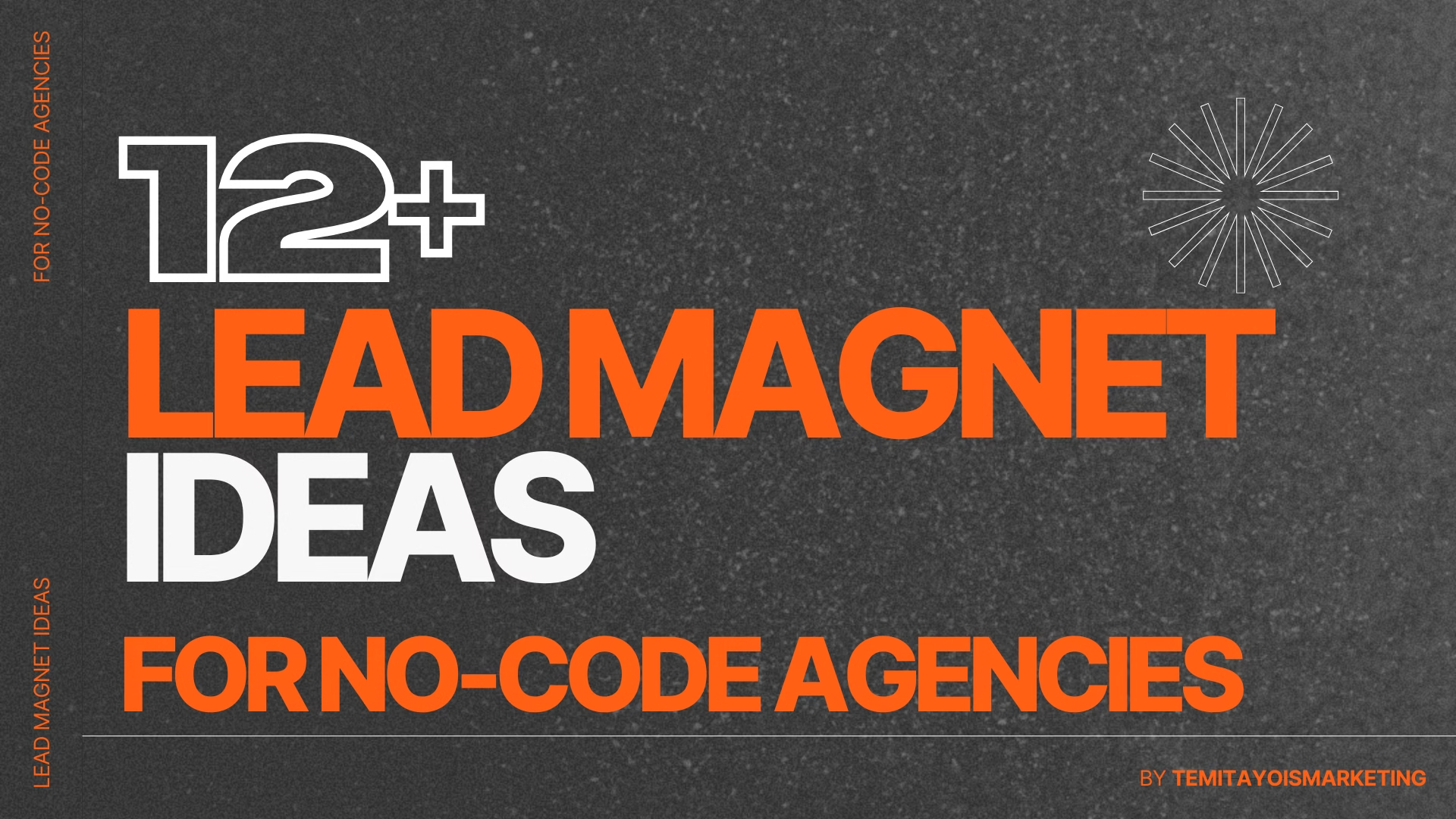Introduction
Most successful businesses don’t just stumble upon their target audience—they know how to find their target audience through research.
There are two key moments when you might need to do audience research.
The first is when you have a general idea of who you want to target but haven’t pinpointed the best audience for your brand.
The second is when you already have an audience but need to separate those with real purchase intent from those just passing by.
In both cases, a strong marketing (or go-to-market) strategy depends on understanding your audience at a deep level.
This process happens in two phases—first, analyzing the broader market to spot opportunities, then refining your audience using data-driven insights like surveys and user interactions.
In this post, we’ll break down how to find your target audience effectively, define your ideal customers, and organize your insights. But before we dive in, let’s start with a simple question: What exactly is audience research?
Key Takeaway
- Audience research helps businesses find and understand their target customers instead of guessing who they are.
- You need to research when:
- You have a general idea of your audience but need to refine it.
- You already have an audience but want to separate real buyers from casual visitors.
- There are two research phases:
- First, involves analyzing the market to find opportunities.
- Second is, using data to refine your audience.
- Types of audience research:
- Quantitative (uses numbers & stats) – Use surveys, website analytics, and social media insights to track behaviours.
- Qualitative (uses opinions & emotions) – Conduct interviews, focus groups, and social listening to understand why people behave a certain way.
- Combining both methods gives a full picture—numbers show trends, while opinions explain behaviours.
- Before defining your target audience, study the market using TAM, SAM, and SOM:
- TAM (Total Addressable Market) – Is your biggest possible audience.
- SAM (Serviceable Available Market) – Is the part you can realistically reach.
- SOM (Serviceable Obtainable Market) – is the people most likely to buy from you.
- How to find your target audience before choosing a target market:
- Use industry reports (Statista, Nielsen, etc.).
- Check Google Trends and keyword research tools.
- Analyze competitors’ websites and traffic.
- How to find your target audience after choosing a target market:
- Use social listening tools (Hootsuite, Brandwatch).
- Conduct surveys and ask questions.
- Track website and social media analytics (Google Analytics, HubSpot).
- What’s next?
- Create a Buyer Persona (Ideal Customer Profile – ICP).
- Include demographics, interests, behaviors, and pain points.
- Use tools like HubSpot’s Make My Persona to organize the data.
Table Of Content
- What Is Audience Research?
- Understanding Your Audience: Qualitative Vs Quantitative Deductions
- How Do You Combine Quantitative and Qualitative Deductions?
- Conducting Audience Research Before Identifying Your Target Audience: TAM, SAM, SOM
- How To Do Audience Research Before Identifying Your Target Market
- How To Do Audience Research After Identifying Your Target Market
- What Next? Creating A Buyer Persona Documentation (or Ideal Customer Profile – ICP)
- Conclusion
What Is Audience Research & How Does It Help You Find Your Target Audience?
Audience research is a set of practices aimed at understanding or finding your target audience/market.
The aim is to better know who they are, and learn their needs, goals, challenges or how they may feel about existing products.
When done right, proper audience research helps to identify the size, composition, and criteria/data that define your target audience
This goes to say; that audience research can be done before identifying your target audience for marketing and can be done even after identifying your desired audience to help you define some of the characteristics that are unique to them and improve your understanding of them.
Understanding Your Audience: Qualitative Vs Quantitative Deductions
Understanding your audience often requires using both qualitative and quantitative methods, as each provides unique insights:
Quantitative Deductions
Quantitative data involves a focus on numbers and metrics, often gathered from surveys, website analytics, and social media statistics.
This type of data helps identify broad trends, behaviours, and demographics within an audience. For example, quantitative deductions can help you answer questions like:
- What percentage of users are returning visitors?
- How many users clicked on a specific link?
- What age range or geographic location is most prominent among your audience?
Key Benefits of Quantitative Deductions:
Scalability: Quantitative data allows you to analyze large data sets quickly, which is valuable for identifying overarching trends.
Measurability: It provides concrete, measurable results that can be compared over time, ideal for tracking growth or behaviour shifts.
Data-Driven Decisions: Quantitative insights help with decisions like content frequency, targeting strategies, and resource allocation.
Some Tools You Can Use For Quantitative Analysis:
Google Analytics for website metrics
Social media insights from groups on platforms like Facebook or Linkedin
Survey tools like Typeform, and Formester for structured questions
Qualitative Deductions
Qualitative data in audience research, on the other hand, delves into the motivations, emotions, and personal experiences of the audience.
This type of deduction is typically gathered through interviews, focus groups, open-ended surveys, and feedback from customer support or social media comments.
Qualitative data helps you understand why users behave the way they do, offering insights that numbers alone don’t normally provide.
For example, qualitative deductions will help you answer questions like:
- What do users think about my brand or product?
- How do users feel when interacting with my content?
- Why do users choose my brand over my competitor?
Key Benefits of Qualitative Deductions:
Depth of Understanding: Provides a rich, detailed view of user perspectives, motivations, and pain points.
Emotional and Contextual Insights: Helps uncover emotional connections and barriers that affect user experience and loyalty.
Personalization: Enables more personalized strategies by understanding the nuances of customer expectations and preferences.
Some Free Tools You Can Use For Qualitative Analysis:
- Interview your users & customers or create focus groups
- Feedback forms with open-ended questions
- Social listening tools like Hubspot or Sprout Social
- Web activity monitoring tools like Hotjar
How Do You Combine Quantitative and Qualitative Deductions?
Using both methods allows for a comprehensive view during your audience research.
For example, if quantitative data shows you a high bounce rate on your web pages, qualitative research (e.g., requesting for user feedback through survey forms) can reveal the reasons behind it, such as encountering confusing navigation or a lack of engaging content.
Together, these insights can guide targeted improvements that are both data-informed and user-centric.
How to Find Your Target Audience: Using TAM, SAM, SOM
Before narrowing down your target audience, it’s important to assess the broader market potential.
This is where the terms, TAM (Total Addressable Market), SAM (Serviceable Available Market), and SOM (Serviceable Obtainable Market) come into play.
These three market segments help you refine your focus from a broad audience to the most realistic and profitable one for your brand.
Your TAM (Total Addressable Market)
This is the entire potential audience that could benefit from your product or service.
If there were no limitations—geographic, economic, or competitive—this would be your maximum possible market.
SAM (Serviceable Available Market):
This is the more realistic portion of your TAM that your brand can realistically serve based on factors like geography, industry focus, or available resources.
While the TAM might be global, your SAM is the segment you can effectively reach.
SOM (Serviceable Obtainable Market)
This is the specific portion of your SAM that you can reasonably capture based on competition, marketing efforts, and brand positioning.
It’s your actual target audience—the people most likely to engage and convert.
How To Find Your Target Audience Before Identifying Your Target Market
While most brands will already have a specific audience in mind while working on their product or service, more information, the TAM, SAM and SOM can be gotten by following some of the processes listed below.
1. Use Existing Materials and Resources From Reputable Sources
The easiest way I like to get started with audience research is to seek out free existing reports, studies, and insights from credible sources to gather baseline data on the industry, trends, and audience behaviours.
This could include industry whitepapers, research from firms like Nielsen, Forrester, or McKinsey, and data from platforms like Statista or Pew Research.
Analyzing these resources provides a foundational understanding of your audience, helps you identify gaps in knowledge, and can guide more targeted research efforts.
2. Use Keyword-Research and Search Trend Tools
Keyword research tools like Google Keyword Planner (now in Google ads) can help you estimate search volume and level of interest in your industry and industry-related keywords.
Google Trends also shows how interest in specific products or topics is changing–rising or falling– over time and tools like SEMrush and Ahrefs provide keyword demand, competitor analysis, and market opportunities.
3. Use Competitor and Competitor-Website Analytics
SimilarWeb helps you estimate the website traffic and audience demographics of competitors in your industry,
SEMrush Traffic Analytics tool and Ubersuggest can provide insights into your competitors’ online reach.
How To Find Your Target Audience After Identifying Your Target Market
4. Use Social Listening Tools, Social Media Groups, Communities & Forums
Social listening tools like Brandwatch, Hootsuite Insights, or Brand24 allow you to monitor what people are saying about your brand, competitors, and industry on social media.
Social media groups, communities, and forums (such as niche Facebook groups) offer a direct line to audience opinions, pain points, and interests.
If you observe conversations in these spaces, you can easily discover emerging trends, gauge sentiment around key topics, and gain a clearer picture of your audience’s language and needs.
Engaging in these communities can also help you discover frequently asked questions and recurring themes, which guide your content creation and messaging.
5. Utilize Surveys and Questionnaires
Surveys and questionnaires are powerful tools to gather firsthand information directly from your audience.
Platforms like SurveyMonkey, Formester or Google Forms make it easy to create surveys that capture valuable details about preferences, motivations, and challenges.
To maximize your response rates, keep your surveys brief and targeted. You can also use a mix of open-ended questions to gain qualitative insights and multiple-choice questions for quick analysis.
Surveys can be shared through email campaigns, social media, in adverts before refining your audience- or even embedded on your website.
This approach ensures you’re capturing insights straight from your target audience.
6. Monitor Activities and Interactions With Analytical Tools like GA4 and HubSpot
Using analytical tools like Google Analytics 4 (GA4) and HubSpot enables you to track and analyze audience behaviour on your website, social media, and email campaigns.
GA4 offers insights into user flow, time spent on pages, and conversion paths, helping you understand what content resonates and where drop-offs occur.
HubSpot provides additional details on lead behaviour, engagement patterns, and content performance across multiple channels.
By monitoring these metrics, you can identify high-performing content, refine targeting, and make data-driven adjustments to your strategies based on real-time insights into your audience’s interactions.
What Next? Creating A Buyer Persona Documentation (or Ideal Customer Profile – ICP)
To ensure your marketing resonates, it’s essential to define your target audience and create detailed personas or ideal customer profiles (ICPs).
Aside from the demographic data (age, gender, income, etc.) obtained through audience research, psychographic data (such as values, interests, and lifestyle), and behavioural traits ( such as purchase behaviours, and online habits) should also be documented.
Use the information from your research to craft personas that represent different segments within your target audience, detailing their goals, challenges, and preferred communication channels.
You can use the Hubspot Make My Persona tool to build your personas and add personalized details about each contact based on your research
These personas will serve as a reference for all marketing activities, helping you tailor your messaging, tone, and strategies to meet specific audience needs and preferences.
Conclusion
In conclusion, audience research is essential for creating a marketing strategy that resonates with your target market.
Combining tools like Google Analytics and social listening platforms with hands-on methods like surveys and interviews ensures a comprehensive view of your audience’s behaviour and motivations.
As you apply these insights, you can create targeted campaigns and personalized content that truly connect with your audience, ultimately driving engagement, loyalty, and growth for your brand.






